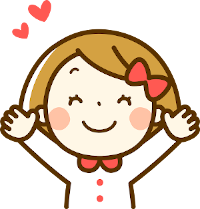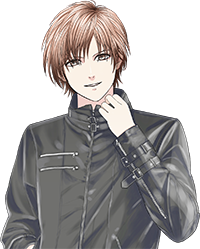25 April 2020
How to say “cute” in Japanese
(This article is reviewed and edited by native Japanese speakers to ensure accuracy.)
You might already be familiar with the Japanese word “kawaii” for the word “cute”. There are countless anime, manga, and even an entire “kawaii” culture. In Japan, children and adults alike, embrace the childishness and cuteness of everything. Did you know that there are actually many words in Japanese that are used to express “cute” in different contexts?
Here are seven words that can mean “cute”, or used to compliment someone, and how to use them!
1. かわいい – Kawaii

One of the most famous words in the Japanese language, かわいい, can have many meanings. It can sometimes be confusing to understand all of the unique nuances.
It can be used to describe something cute and small: puppies, babies, children, etc…
その子犬かわいいね。
Sono koinu kawaii ne.
That puppy is so adorable/cute
However, it can also be used to describe something that is small because being small is associated with cuteness.
この料理かわいいね。
Kono ryouri kawaii ne.
The dish is quite small.
かわいい can also be used to describe someone attractive, particularly a woman. Other than cute, it can often mean that the woman has a childish appearance or a sweet personality.
AKB48の女の子たちめっちゃかわいい。
AKB48 no onnanoko-tachi meccha kawaii.
The girls in AKB48 are very cute.
It is also possible to use it to describe clothing, accessories, and items that are cute.
Pretty much anything that’s adorable or cute can be かわいい!Just make sure to keep in mind that there are big gender differences in spoken Japanese. For example, men will rarely use this word to complement each other about their outfits or items. This is because it’s a word that’s often associated with femininity.
スカートかわいいね。
Sukaato kawaii ne.
That skirt is cute.
Sometimes there is also a possibility to use かわいい when refering to someone who is endearing and cute. This could even apply to a middle-aged man and often young women will say this. Keep in mind that this does not mean that the man is attractive, it is just that there is something adorable about him. If you saw a middle-aged man with an ice cream cone or with a tiny poodle you might want to say:
あのおじさんかわいい!
Ano ojisan kawaii!
That middle-aged man is cute!
The last thing I wanted to add is that many Japanese learners easily confuse かわいい (kawaii) with a very similar sounding word, 怖い (kowai). 怖い means scary. If you’re planning to tell a special someone that they are かわいい, make sure to say the right word!
2. かっこいい – Kakkoii


This is a compound word that includes looks (かっこ) and good (いい). Just like the word “cute”, it is useful when we want to express attraction towards someone. However, compared to かわいい, it is often used to describe men. It usually means that you admire or look up to them. Other synonyms include handsome, good-looking, and cool.
鈴木くんかっこいいよね。
Suzuki-kun kakkoii yo ne.
Isn’t Suzuki-kun handsome?
人を助けるのかっこいい!
Hito o tasukeru no kakkoii!
It’s cool to help someone!
かっこいい can be also be used to describe clothing, accessories, and things that have a cool style. It’s usually associated with men but can also apply to women. When I think about this word, I imagine motorcycles, rock bands, or cowboy boots!
その革ジャンかっこいいね。
Sono kawajan kakkoii ne.
That leather jacket is cool.
When used towards women, it generally means that the woman is cool. Make sure not to use かっこいい if you want to describe a woman as being attractive in a cute way.
初めての女性宇宙飛行士なんだって。かっこいい。
Hajimete no josei uchuu hikoo-shi nan datte. Kakkoii.
I hear she is the first female astronaut. She is so cool.
3. キュート – Kyuuto


キュートis an English loan word from the word “cute”. There is a general feeling in Japan that foreign words are especially stylish and trendy. If you’ve been to Japan, maybe you’re familiar with the random English words on T-shirts or in J-pop song lyrics. When the word “cute” is expressed as キュート, it’s often used for advertisements, Japanese idol groups, and things that are fashionable.
キュートなバッグ。
Kyuuto na baggu.
A cute/stylish handbag.
4. きれい – Kirei


This word can be used to describe something or someone that is pretty or beautiful in a casual way. This usually isn’t a word used towards men, and it is more often towards women.
きれい as a compliment for a woman generally sounds more mature than かわいい.
佐藤さんってきれいじゃない?
Satou-san tte kirei janai?
Isn’t Satou-san beautiful?
Another meaning for きれい is clean. It may seem a bit odd that the same word for pretty could mean clean. However, a reason for this double meaning is that Japanese culture values cleanliness.
部屋きれいにして!
Heya kirei ni shite!
Clean your room!
5. 美人 – Bijin


The word 美人 is made up of two kanji characters meaning beauty (美) and person (人). Compared to some of the other words, it is simple to use as there is only one definition. It means a “beautiful woman”. This word can have a classy and respectable connotation.
ブラジルのモデルは美人です。
Burajiru no moderu wa bijin desu.
The fashion models from Brazil are beautiful.
You can also say 美女 (bijo – beautiful woman).
美女の国に行きたい。
Bijo no kuni ni ikitai.
I want to go to a country of beautiful women.
And 美男 (binan -beautiful man).
美男美女のカップルって羨ましい。
Binan bijo no kappuru tte urayamashii.
I envy beautiful couples.
6. 美しい – Utsukushii


During the Heian period (~7th-10th centuries) in Japan, 美しい was actually used in the same way as the modern かわいい. However, over time it has evolved into meaning beautiful. It is considered a classy word, often used in Japanese writing to express deep beauty. It can be used to describe landscapes, color, sound, people, and art.
モネの作品は色使いが美しいです。
Mone no sakuhin wa iro-zukai ga utsukushii desu.
In Monet’s works, the use of colors are beautiful.
7. イケメン – Ikemen


After appearing in a magazine around 1999, this word started to gain popularity among the younger generation. It comes from the phrase meaning cool (いけてる) and the word “mens” (メンズ) combining to form イケメン. It’s a slang that is used to describe men that are attractive or hot. It’s usually a word used to gossip or talk between friends. Keep in mind that it’s not too common to tell someone directly that they are イケメン。
サッカー選手のクリスティアーノ・ロナウドはイケメン。
Sakkaa senshu no kurisutiaano ronaudo wa ikemen.
The soccer player, Christiano Ronaldo, is so hot/cute.
Guys being “cute” vs. Girls being “cute”
Now that we’ve gone through the meanings of certain Japanese words and how they relate to the word “cute”, it might be useful to clarify the gender differences. In English we can use “cute” as a word for attraction towards both women and men. However, in Japanese it can be a bit more complicated. Here is an overview!
- “That guy is cute”
In Japanese, it’s necessary to be a bit more specific in what you mean by “cute”. It would be unlikely to use かわいい, unless a guy actually had a girly, feminine, and childish look. Instead, choose かっこいい if you think the guy is handsome, cool, or admirable. If you want to be a bit more trendy or if the guy is hot, try using イケメン.
- “That girl is cute”
When describing women, it’s also important to be mindful of what kind of “cute” you want to express. If the woman is attractive in an adorable, feminine, and innocent way, かわいい would be the way to go. To express that she is beautiful, 美人 or 美しい would be a good choice. If you mean that she’s pretty in a more casual way, use きれい.
Other ways to translate “cute” to Japanese
There are a few other ways in which “cute” can also be used in English, that might be difficult to translate to Japanese. In certain situations, “cute” is used in a way that means that you’re taking something too lightly. In these situations, it would be translated with あまちゃん.
頭がいいと思ってるの?あまちゃんだね。
Atama ga ii to omotteru no? Amachan dane.
Oh, you think you’re smart? That’s cute.
In English, there are also times when “cute” can be used to mean “childish” . In those cases it would be translated with 子供っぽい.
この会議は真剣なので、子供っぽいコメントはやめてください。
Kono kaigi wa shinken’nanode, kodomoppoi komento wa yamete kudasai.
This meeting is serious, can you stop making cute comments?
In this way, there are many situations where the word “cute” might have different translations in the Japanese language. As you continue to learn and become familiar with Japanese, you might notice more and more words that could mean something similar to “cute”. Part of the joy of language learning can be the discoveries of new words that can sometimes only exist in another language. I hope this guide has been helpful in mastering the word “cute” in Japanese!

